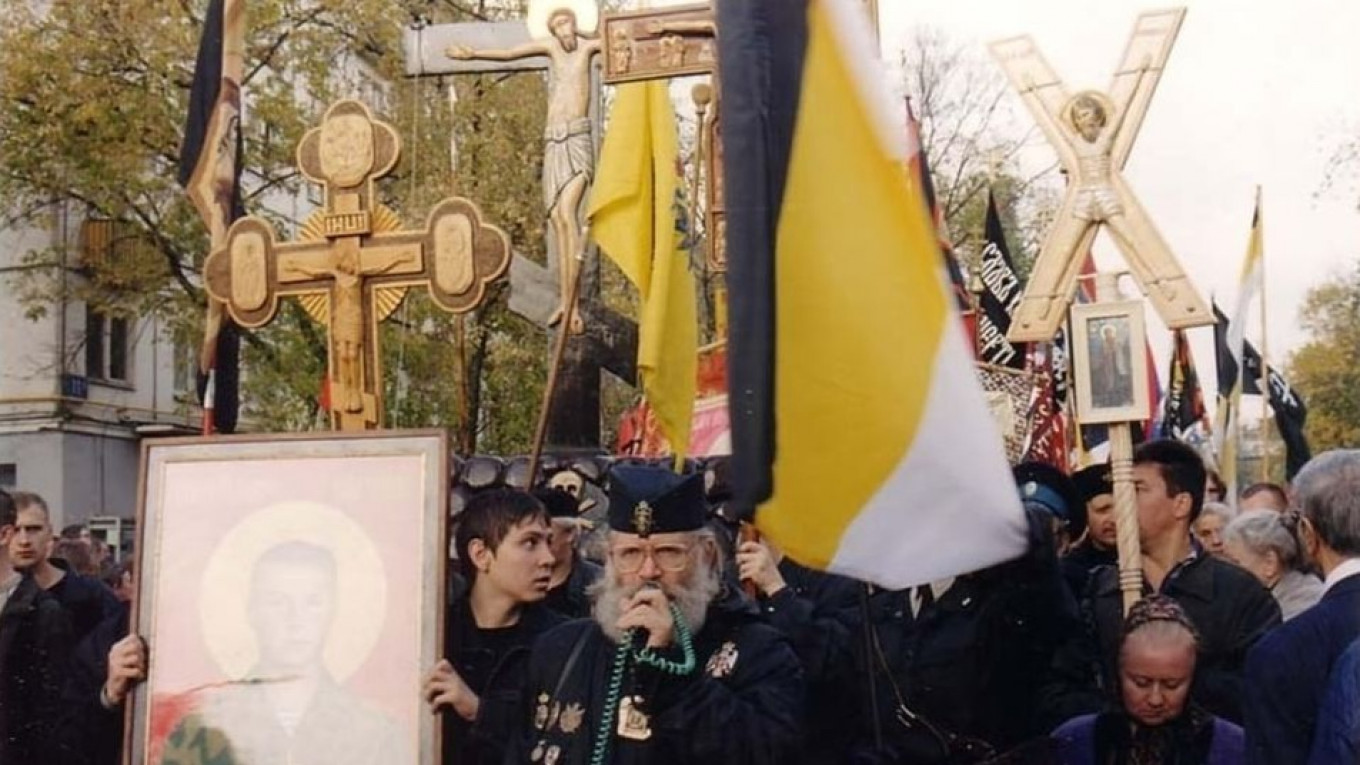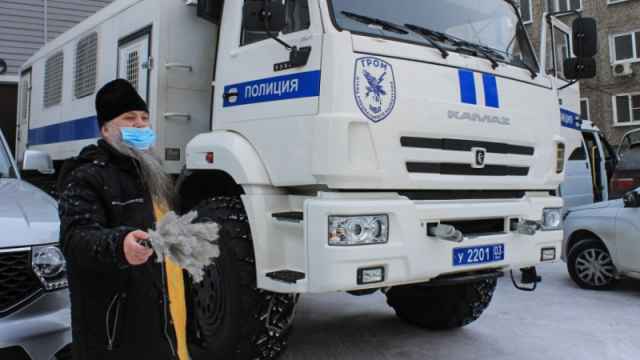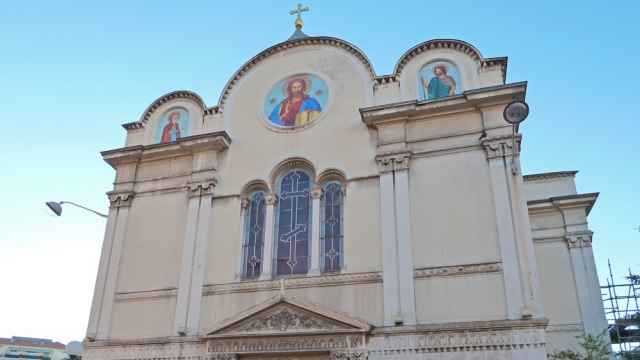Their slogan is Orthodoxy or Death. They are convinced Russia should be ruled by an autocratic monarch. They believe the coming of a new tsar may be imminent.
The Union of Orthodox Banner Bearers is a small fringe group of Russian nationalists with no political power that stages processions, rallies and even burns books to promote their views.
Clad in all-black and marching with their Orthodox banners, the group pairs a biker club's aesthetic with the gold of religious icons.
"We are striving for the restoration of an autocratic monarchy. Like the one we had under our tsars," Leonid Simonovich-Nikshich, the group's white-bearded leader, said.
"It is only possible through the church. In no way is this possible in a political secular way because that would be a dictator," he said.
Its leaders say they are unsure how a shift to a monarchy might come about, with some members seeing the change emerging from a bloody social convulsion and others simply praying for it to happen.
Ultra nationalist politician Vladimir Zhirinovsky has referred to Putin as a modern-day tsar, but the Orthodox group's political allegiances are unclear and it is not suggesting that the Russian president head an autocratic monarchy.
The group held a religious procession at a monastery in Moscow last month to mark one of the most important recent dates in their calendar: the 100-year anniversary of the murder by the Bolsheviks of Russia's last monarch, Tsar Nicholas II.
The tsar, his wife and five children were shot on the night of July 16-17, 1918, in the basement of a merchant's house in the city of Yekaterinburg, 1,450 kilometers (900 miles) east of Moscow.
After the collapse of the Soviet Union and the state atheism it espoused, the church canonized the tsar and his family, and his popularity as a historical figure has grown amid a Russian Orthodox Church resurgence under President Vladimir Putin.
Russian religious conservatives last year waged a campaign to block the release of "Matilda," a Russian movie the Union of Orthodox Banner Bearers described as blasphemous for its depiction of a romance between the tsar and a young ballerina.
The group did not attend the main memorial event in Yekaterinburg to mark the centenary of his murder however.
It was told it would not be allowed to raise its standards — some of which feature skulls and radical slogans like Orthodoxy or Death — at the event, Igor Miroshnichenko, a member of the group, said.
Instead, the group gathered at the Andronikov Monastery of the Savior in Moscow on July 17 where they marched with tall crosses and standards depicting Russia's last tsar.
A Message from The Moscow Times:
Dear readers,
We are facing unprecedented challenges. Russia's Prosecutor General's Office has designated The Moscow Times as an "undesirable" organization, criminalizing our work and putting our staff at risk of prosecution. This follows our earlier unjust labeling as a "foreign agent."
These actions are direct attempts to silence independent journalism in Russia. The authorities claim our work "discredits the decisions of the Russian leadership." We see things differently: we strive to provide accurate, unbiased reporting on Russia.
We, the journalists of The Moscow Times, refuse to be silenced. But to continue our work, we need your help.
Your support, no matter how small, makes a world of difference. If you can, please support us monthly starting from just $2. It's quick to set up, and every contribution makes a significant impact.
By supporting The Moscow Times, you're defending open, independent journalism in the face of repression. Thank you for standing with us.
Remind me later.






